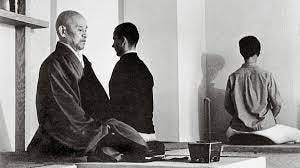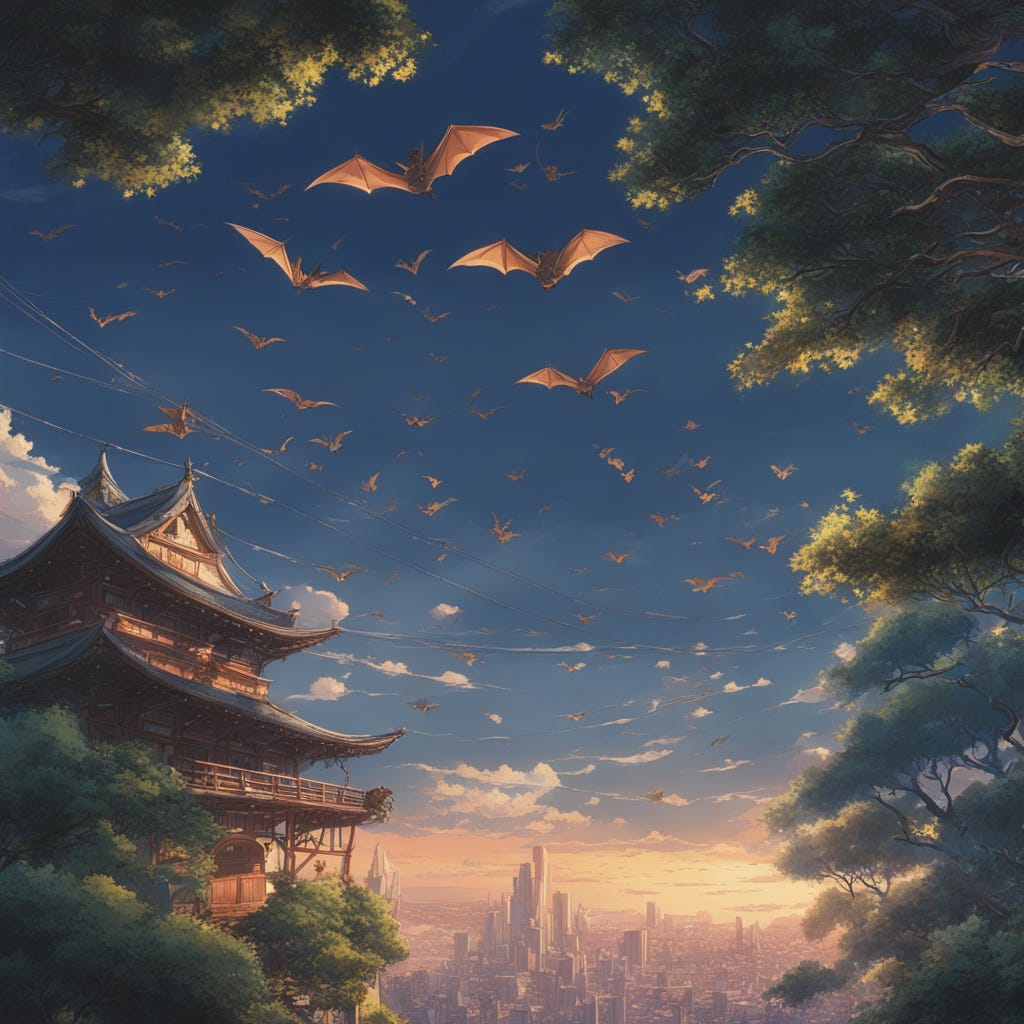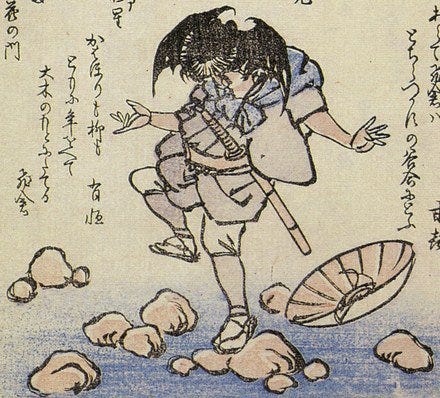During yesterday’s breakfast in the meditation hall, a tiny visitor joined us: a bat.
It flew in through a back door that the meal servers had left open while coming and going with various pots of food: amaranth, chia seed pudding, and apples. It’s not uncommon for bats to fly into the zendo when both front doors are open, which is the form when the Abbot is entering or exiting.
However, they usually visit us during early morning or late evening zazen. At these times, everyone—except the Abbot, Tanto, and Shuso, is facing the wall with their eyes downcast. Once we’re settled into our seated meditation posture and the Abbot has taken her seat, the form is that we do not turn around or leave the meditation hall unless there’s an emergency. And even then, it’s expected that you stay in zazen posture while the most senior residents attend to whatever’s arising.
Case in point: During one summer guest season, I was meditating next to Rev. Gengo Akiba Roshi, the Sokan (Bishop) of Sotoshu in North America, when there was a loud crash and clatter outside the meditation hall. I instinctively flinched and then looked up and over at Akiba Roshi. He sat as still as a rock in cement as the commotion continued for a few minutes before it quieted outside. This was years ago, and his immovable wall sitting still stays with me.

Back to the bat.
Since the winged mammal flew in during oryoki breakfast, we were all facing the center of the room with the lights on. This meant it was much easier to watch the bat swoop around. One student pointed at it with a surprised-scared look on his face while several others laughed.
I initially looked up at the bat and watched in amazement as it effortlessly avoided the servers as they walked holding the pots of food. The servers moved their heads this way and that when the bat got too close for comfort. Abbot Mako, who sits nearest the front doors on the east tan (a raised wooden platform) opened the door closest to her to give the winged mammal another way out. As she did this, I thought, “Oh no, another one might swoop in.”
As if that thought had conjured it, a companion bat arrived. And then a moment later another and then another. Now there were four bats mesmerizing us and perhaps frightening some people, as they flapped and fluttered in what seemed like a choreographed aerial dance.
I was surprised that I did not laugh at the whole scenario, especially after the other bats flew in. Usually, I am someone who laughs quite easily and often. However, the urge to laugh never even arose. I did, however, suppress a grin, and returned to zazen posture with my eyes gazing at a 45 degree angle—sneaking peeks at the awe-inspiring bats as they swirled through space.
People new to meditation often ask why we keep our eyes half-closed and downcast during meditation. Keeping our gaze downward facilitates the quieting of the thinking mind by limiting our field of vision. The lack of visual stimuli also helps calm the central nervous system—when our mind consciousness perceives sensory objects, cognition happens, and then discriminatory thinking can arise, and next thing you know, you’re lost in thought: “The bats are beautiful,” “They’re scary,” “It’s almost Halloween.”
Speaking of scary, I read on this website Curious Ordinary that in Japanese folklore bats are associated with several yōkai—strange apparitions. Very old bats, called nobusuma or tobikura, transform into yōkai and “feed on fire and blood sucked out of humans or animals. They prey on travellers, swooping down from trees, extinguishing fires and attaching to their victim's faces to begin sucking their blood. When the Nobusuma age they transform again into an even more dangerous yokai known as yamachichi.”
Okay, so at least these bats were not yōkai! That’s another reason not to look up! 🦇






Did I ever tell you about the bat in my bedroom at 3am? My reaction was so outrageous, my husband took me to an animal sanctuary so I could meet bat ambassadors (they are so cute!). We even built bat boxes. I would have benefited from your approach back then.
How wonderful to participate vicariously in your Tassajara sojourn! Thank you so much.